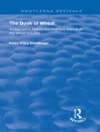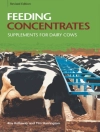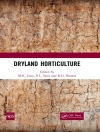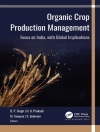This book reviews recent innovations in the smart agriculture space that use the Internet of Things (Io T) and sensing to deliver Artificial Intelligence (AI) solutionsto agricultural productivity in the agricultural production hubs. In this regard, South and Southeast Asia are one of the major agricultural hubs of the world, facing challenges of climate change and feeding the fast-growing population. To address such challenges, a transboundary approach along with AI and BIG data for bioinformatics are required to increase yield and minimize pre- and post-harvest losses in intangible climates to drive the sustainable development goal (SDG) for feeding a major part of the 9 billion population by 2050 (Society 5.0 SDG 1 & 2). Therefore, this book focuses on the solution through smart Io T and AI-based agriculture including pest infestation and minimizing agricultural inputs for in-house and fields production such as light, water, fertilizer and pesticides to ensure food security aligns with environmental sustainability. It provides a sound understanding for creating new knowledge in line with comprehensive research and education orientation on how the deployment of tiny sensors, AI/Machine Learning (ML), controlled UAVs, and Io T setups for sensing, tracking, collection, processing, and storing information over cloud platforms for nurturing and driving the pace of smart agriculture in this current time.
The book will appeal to several audiences and the contents are designed for researchers, graduates, and undergraduate students working in any area of machine learning, deep learning in agricultural engineering, smart agriculture, and environmental science disciplines. Utmost care has been taken to present a varied range of resource areas along with immense insights into the impact and scope of Io T, AI and ML in the growth of intelligent digital farming and smart agriculture which will give comprehensive information to the targeted readers.
Зміст
Chapter 1
. Io T x AI: Introducing Agricultural Innovation for Global Food Production.- Chapter 2. Transforming Controlled Environment Plant Production toward Circular Bioeconomy Systems.- Chapter 3. Artificial Lighting Systems for Plant Growth and Development in Indoor Farming.- Chapter 4. An Io T-based Precision Irrigation System to Optimize Plant Water Requirements for Indoor and Outdoor Farming Systems.- Chapter 5. Artificial Intelligence & Internet of Things: Application in Urban Water Management.- Chapter 6.Purification of Agricultural Polluted Water Using Solar Distillation and Hot Water Producing with Continuous Monitoring Based on Io T.- Chapter 7. Long Range Wide Area Network (Lo Ra WAN) for Oil Palm Soil Monitoring.- Chapter 8. Application of Smart Machine Vision in Agriculture, Forestry, Fishery, and Animal Husbandry.- Chapter 9. Artificial Intelligence in Agriculture: Commitment to Establish Society 5.0 .- Chapter 10. Potentials of Deep Learning Frameworks for Tree Trunk Detection in Orchard to Enable Autonomous Navigation System.- Chapter 11. Real Time Pear Fruit Detection and Counting Using YOLOv4 Models and Deep SORT.- Chapter 12. Pear Recognition in an Orchard from 3D Stereo Camera Datasets to Develop an Autonomous Mechanism Compared with Deep Learning Algorithms.- Chapter 13. Thermal Imaging and Deep Learning Object Detection Algorithms for Early Embryo Detection – A Methodology Development Addressed to Quail Precision Hatching.- Chapter 14. Intelligent Sensing and Robotic Picking of Kiwifruit in Orchard.- Chapter 15. Low-cost Automatic Machinery Development to Increase Timeliness and Efficiency of Operation for Small Scale Farmers to Achieve SDGs.- Chapter 16. Vision-based Leader Vehicle Trajectory Tracking for Multiple Agricultural Vehicles.- Chapter 17. Autonomous Robots in Orchard Management: Present status and future trends.- Chapter 18. Comparing Soil Moisture Retrieval from Water Cloud Model and Neural Network Using PALSAR-2 for Oil Palm Estates.- Chapter 19. Development of a Recognition System for Spraying Areas from Unmanned Aerial Vehicles Using a Machine Learning Approach.- Chapter 20. Basal Stem Rot Disease Classification by Machine Learning Using Thermal Images and an Imbalanced Data Approach.- Chapter 21. Early Detection of Plant Disease Infection using Hyperspectral Data and Machine Learning.- Chapter 22. The Spectrum of Autonomous Machinery Development to Increase Agricultural Productivity for Achieving Society 5.0 in Japan.
Про автора
Tofael Ahamed is an Associate Professor, at the Faculty of Life and Environmental Sciences, the University of Tsukuba, which is one of the leading universities in Japan. Dr. Ahamed performs research in the field of precision agriculture technology, agricultural robotics, and decision support systems. He focuses on enabling smart applicationsusing the Internet of Things (Io T) and Artificial Intelligence (AI) in agriculture, where crop production varies spatially and temporally within the field boundaries depending on the soil and environmental conditions. Dr. Ahamed is also member of the American Society of Agricultural and Biological Engineers, Japanese Society of Agricultural Machinery, Food Engineers, Japanese Society of Agricultural Information, and Japan Section of Regional Science Association. He is also serving as one of the Associate Editors for Computer and Electronics in Agriculture, Agricultural Information Research, Editorial Member for Asia-Pacific Journal of Regional Science, Author and Editor of serval books and Guest Editor of special issues for Remote Sensing.












